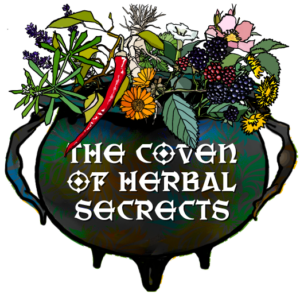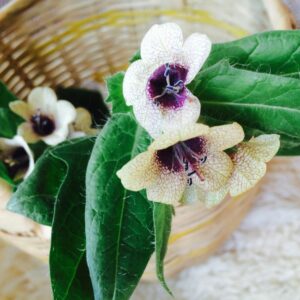Passed down through generations that date back to ancient civilizations, the use of herbs in funeral rites and ceremonies was, and still is, a way to honour and protect the dead. While folklore traditions throughout the world vary according to cultures and religions, the symbolism of herbs is integral to death, burial rites and the departed.
Around the world, different herbs or flowers represent a range of symbolic or practical processes, such as purification, mummification, or aromatic and spiritual significance. They offer protection from harmful spirits; aid souls to pass over peacefully; and mourn the deceased with respect and honour. Channeling herbs for funeral ceremonies is also a way of providing solace to the bereaved.
Many traditions from around the world are often intermingled with myths and superstitions. These included, covering mirrors or turning family photos face down so the soul of the deceased wouldn’t get trapped; or, to ward off bad luck, one should stop the clocks in the room where the person had died.
How Herbs Influence Funeral Rites
For purification and cleansing, burning herbs like sage during funeral ceremonies are done to cleanse the space of negative energies and create a spiritually pure environment. Both Myrrh and frankincense, resins with a rich, earthy scent, are burned in various ancient cultures for their aromatic and purifying properties, and were included in burial rituals to mask odours and symbolise spiritual purification. In other cultures, branches or leaves of cypress trees were utilised due to their fresh and woody aroma; Cypress was associated with mourning and often planted in cemeteries.
Herbs, both fresh and dried, are often intertwined in floral arrangements, wreaths, garlands and other funeral decorations. Not only do they add natural beauty, but are also chosen for their specific meanings or the preferences of the deceased and their family. The aromatic qualities of certain herbs for arrangements, such as eucalyptus, thyme, or lavender, are commonly used in funeral sprays and bouquets. In some cultures, herbs may be placed in or around the casket, and sometimes even inside the burial shroud or clothing of the deceased. This is often done to provide a connection between the individual and the natural world. The choice of herbs may be based on cultural beliefs, personal preferences, or the symbolic meanings associated with each herb.
Rosemary (Salvia rosmarinus)
 Rosemary, the herb of remembrance, has long been associated with burial rites. Examples include the ancient Egyptians who utilised it for embalming the bodies of their loved ones and in other cultures, it masked the scent of decay and provided a sense of purification. It could also be laid out in the room where a body was laid along with other fragrant herbs and flowers.
Rosemary, the herb of remembrance, has long been associated with burial rites. Examples include the ancient Egyptians who utilised it for embalming the bodies of their loved ones and in other cultures, it masked the scent of decay and provided a sense of purification. It could also be laid out in the room where a body was laid along with other fragrant herbs and flowers.
In some traditions, rosemary may be burned as incense during funeral ceremonies. The smoke is believed to carry the essence of the herb so it can purify the space, creating a sacred atmosphere. The fragrance of rosemary plays an important role in guiding the spirits of the deceased, acting as a sort of aromatic path to help them navigate the afterlife.
In addition to the medicinal properties of rosemary, this herb has also played a longstanding part to remember the memory of a loved one. This was done by placing sprigs inside the burial ground, casket or scattered on the grave along with the deceased; reflecting the intention that the herb’s aroma lingers in the air, along with cherished memories. Alternatively, bunches of rosemary were also thrown into open graves to help the dead to find their way, as well as to mask the odour.
Elder (Sambucus nigra)
Elder has been connected with various symbolic and practical uses in different cultures, but its specific use in funeral rites can vary. The elder tree holds cultural significance in folklore and traditional beliefs, and its association with death and protection is present in some customs.
In many cultures, the elder is long revered for protection and warding off evil spirits. Branches or twigs of the elder tree might be used as protective elements in funeral rites to ensure a safe passage for the departed, for example. The planting of an elder tree near a grave or as a memorial is considered by some to symbolise the continuing cycle of life and death. The elder’s ability to grow in various conditions and its hardiness may be seen as representing the endurance of the spirit beyond physical life.
Elder flowers, with their delicate appearance and fragrance, are often prepared in floral arrangements or wreaths. The flowers themselves symbolise the transient nature of life or the passing of time.
Henbane (Hyoscyamus niger)
Henbane is a rock and roll plant associated with carnal lusts and extravagant, ritualised orgies, or communing with the dead in darkened graveyards. Our useful medicinal ally is often described as an evil looking, stinking malodorous weed! The cheek of it! This dark description gives henbane a sinister reputation as indeed is the case with all the witching herbs. Around the Middle Ages, even just having these plants growing in your garden could be enough to be brought in for questioning, for sorcery and witchcraft. Much had shifted between the times of the ancient Celts and Greeks, who considered henbane sacred to the Sun Gods, Belenus and Apollo respectively, and a herb that walked in the light.
Henbane is a familiar to ancient authors world over, being one of the most famous medicines and among the most esteemed magical plants. This mesmeric and intricate floral beauty has pale petals with dark purple, striking veins running through them, is, in our experience, the most uplifting and jovial of the three Solanaceae plants. Associated with ‘celebration of death’, henbane has the power to bring a sense of joy and playfulness where there was previously bottomless despair.
Henbane has been found in a Neolithic necropolis in Scotland, where it’s thought that the dying drunk beer brewed with Henbane, or possibly those who were mourning a death. The rich history of henbane ranges from drinking it to experiencing time beyond the veil in the afterlife (Persia), henbane seeds buried in Viking graves, Cleopatra considering taking it as a poison, and is also said to be the chosen poison by Shakespeare in Hamlet: “juice of cursed hebenon”. The Greeks in particular, believed the dead in Hades wore wreaths made from Henbane so they would forget who they were.
Don’t stop reading yet…!
If you want to know the more about Herbs in Rituals, why not join our Coven? You’ll soon have access to our best resources while increasing your confidence and knowledge about the magic of herbs and master the art of herbal remedy creation, spells and rites, plus step by step guides to getting to know your plants better.
Herbs in Rituals will cover the topics above more in-depth, plus:
- Symbolism of Herbs and Flowers in Funeral Rites
- Traditional customs from around the world
- Herbs in Weddings and Handfasting Rituals
- And much MORE!
Plants are calling YOU






